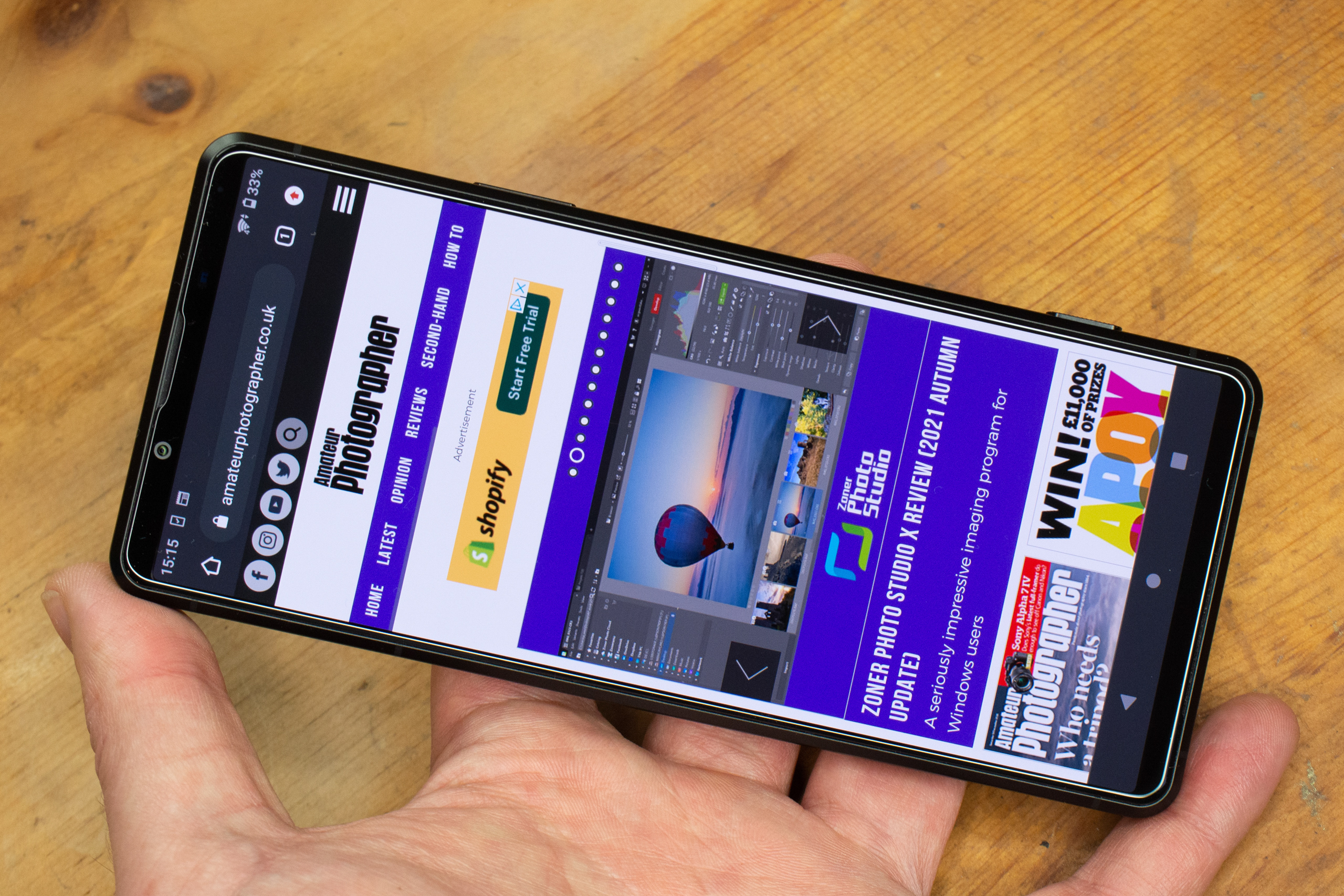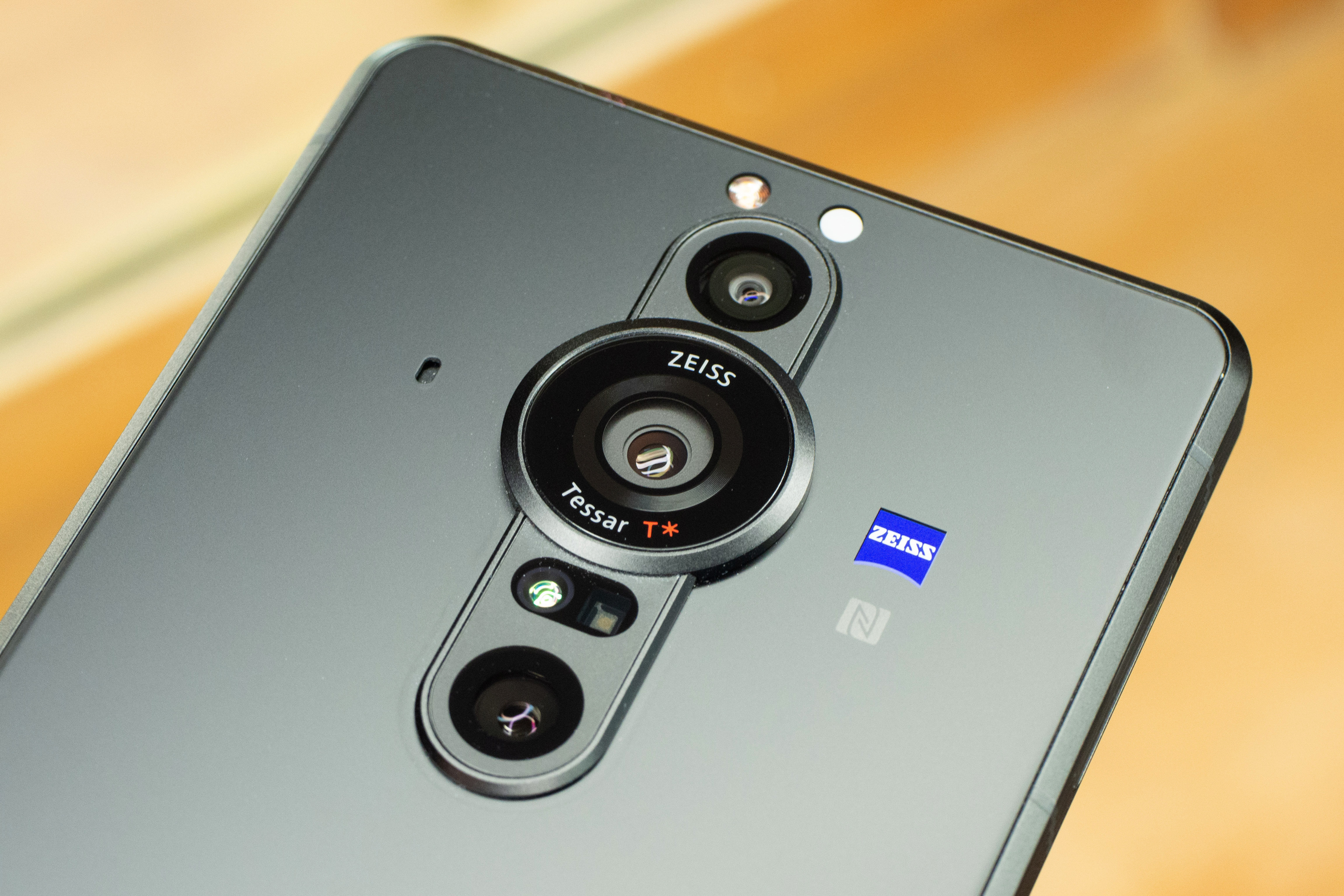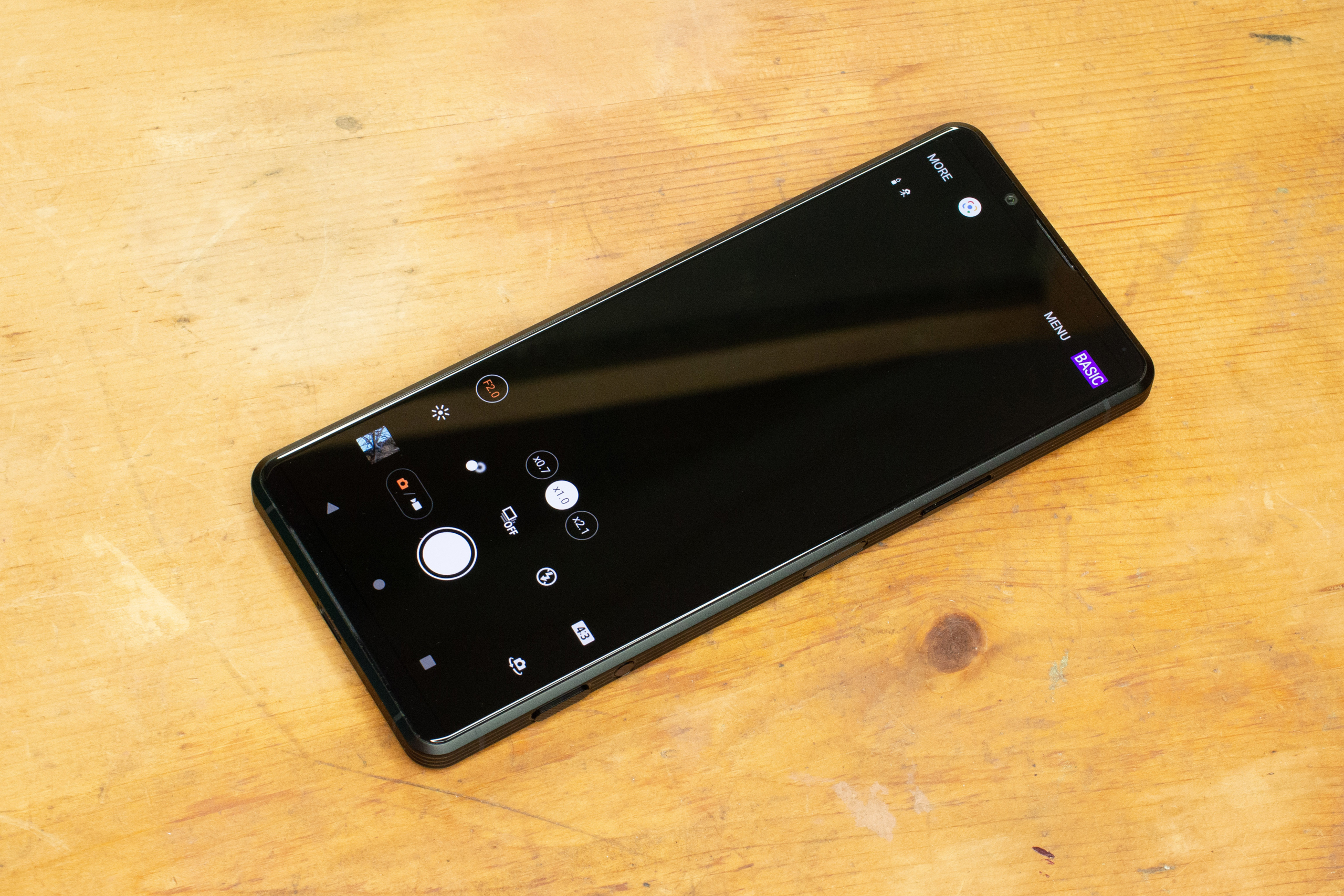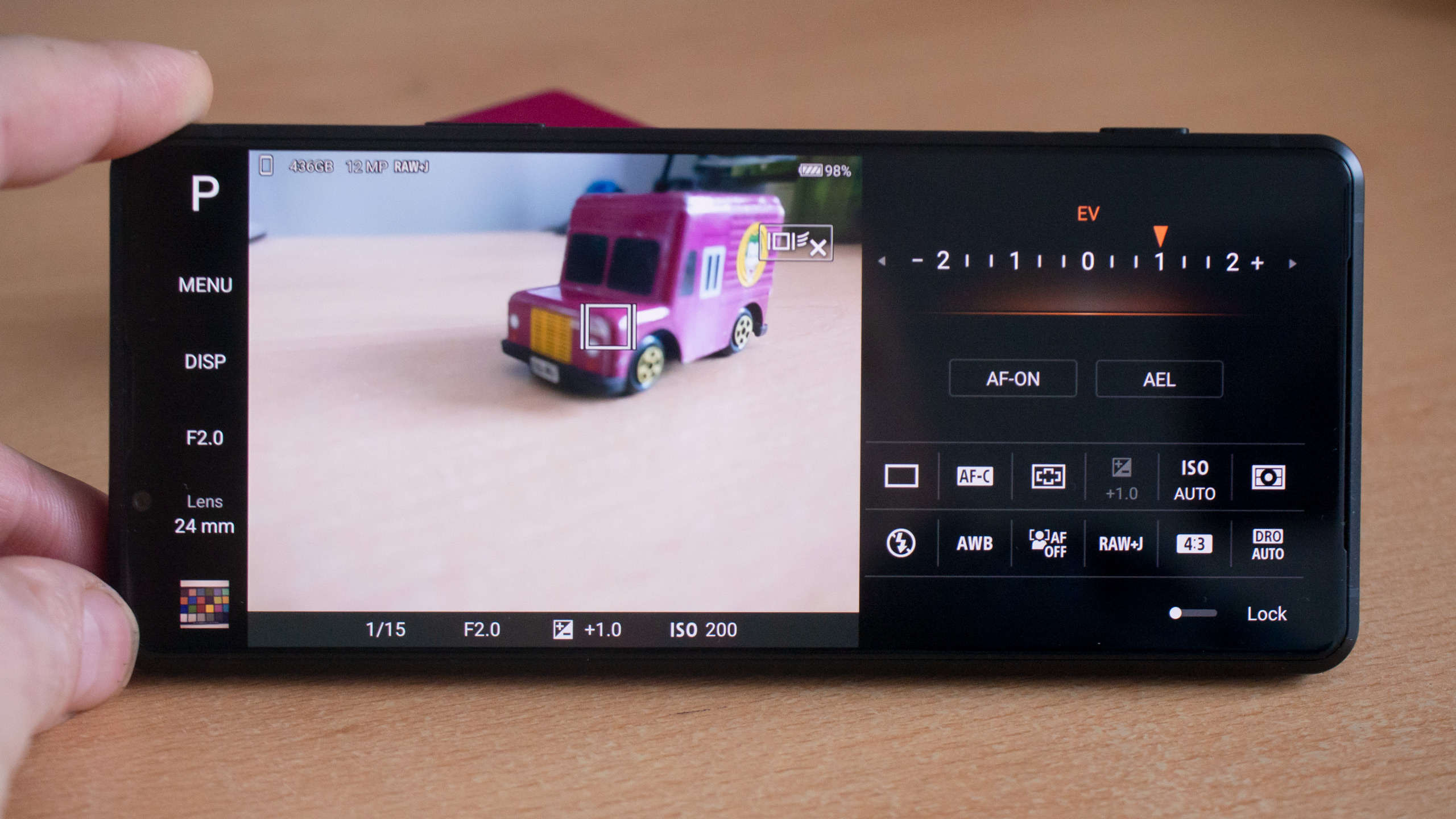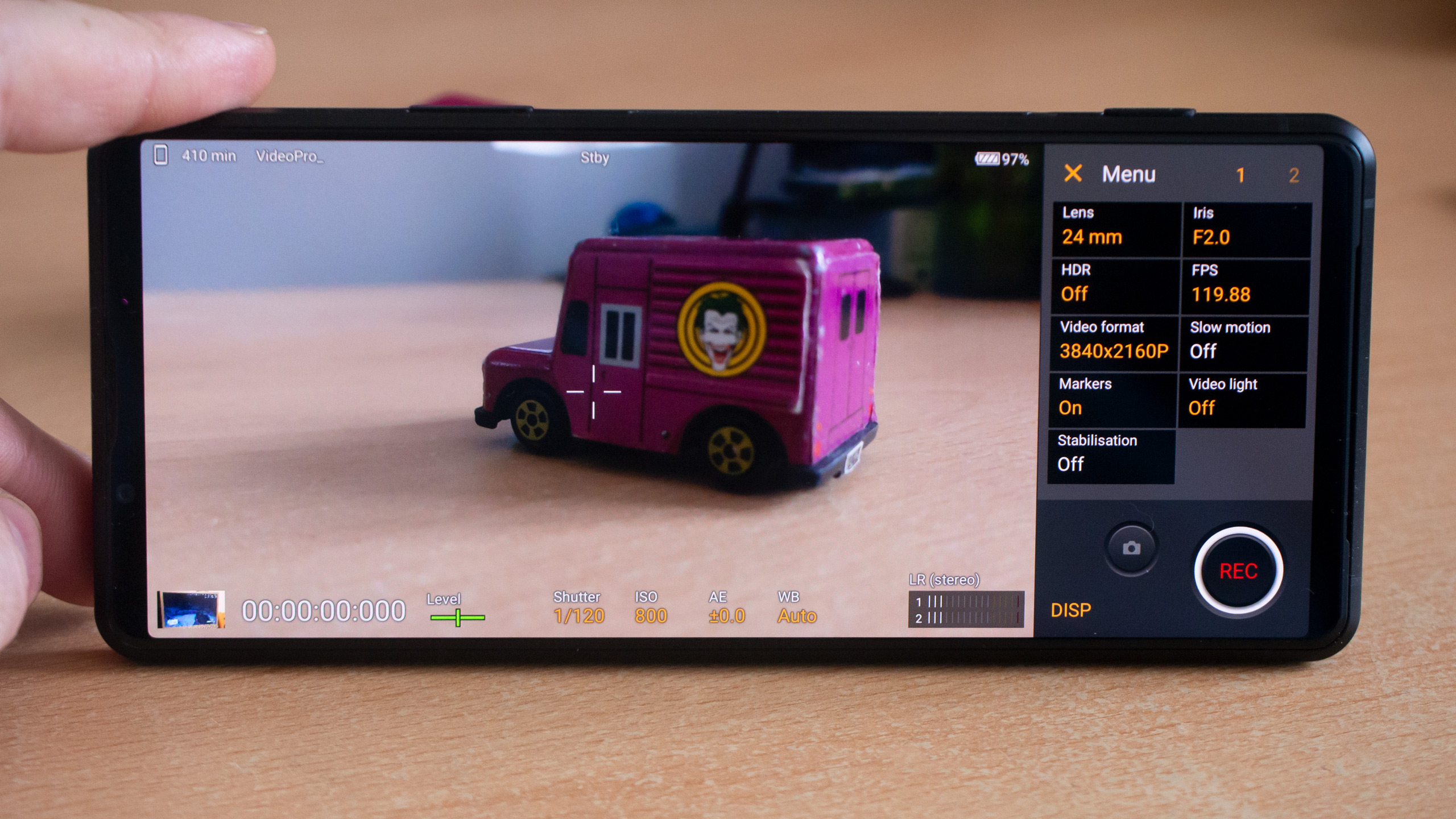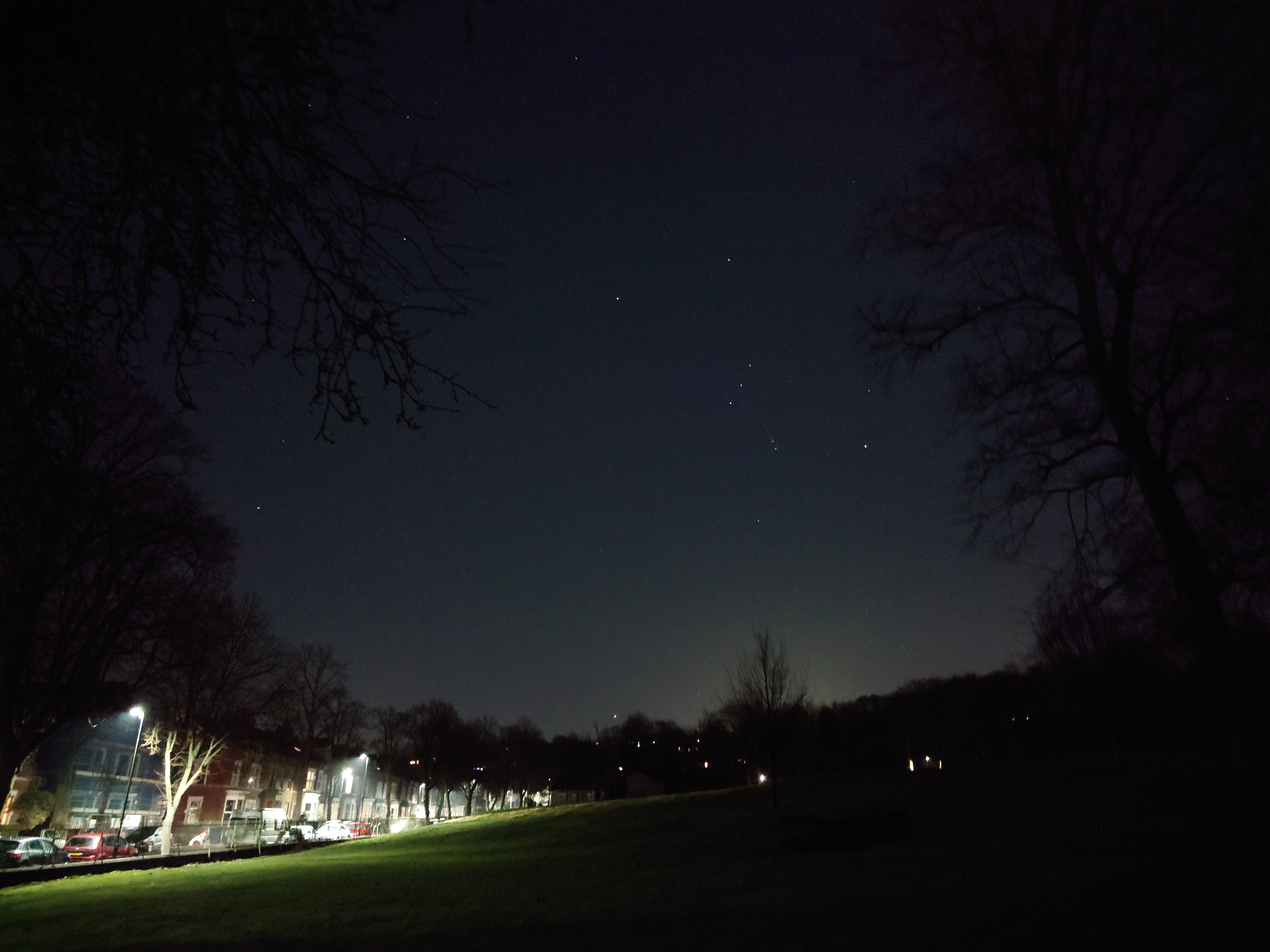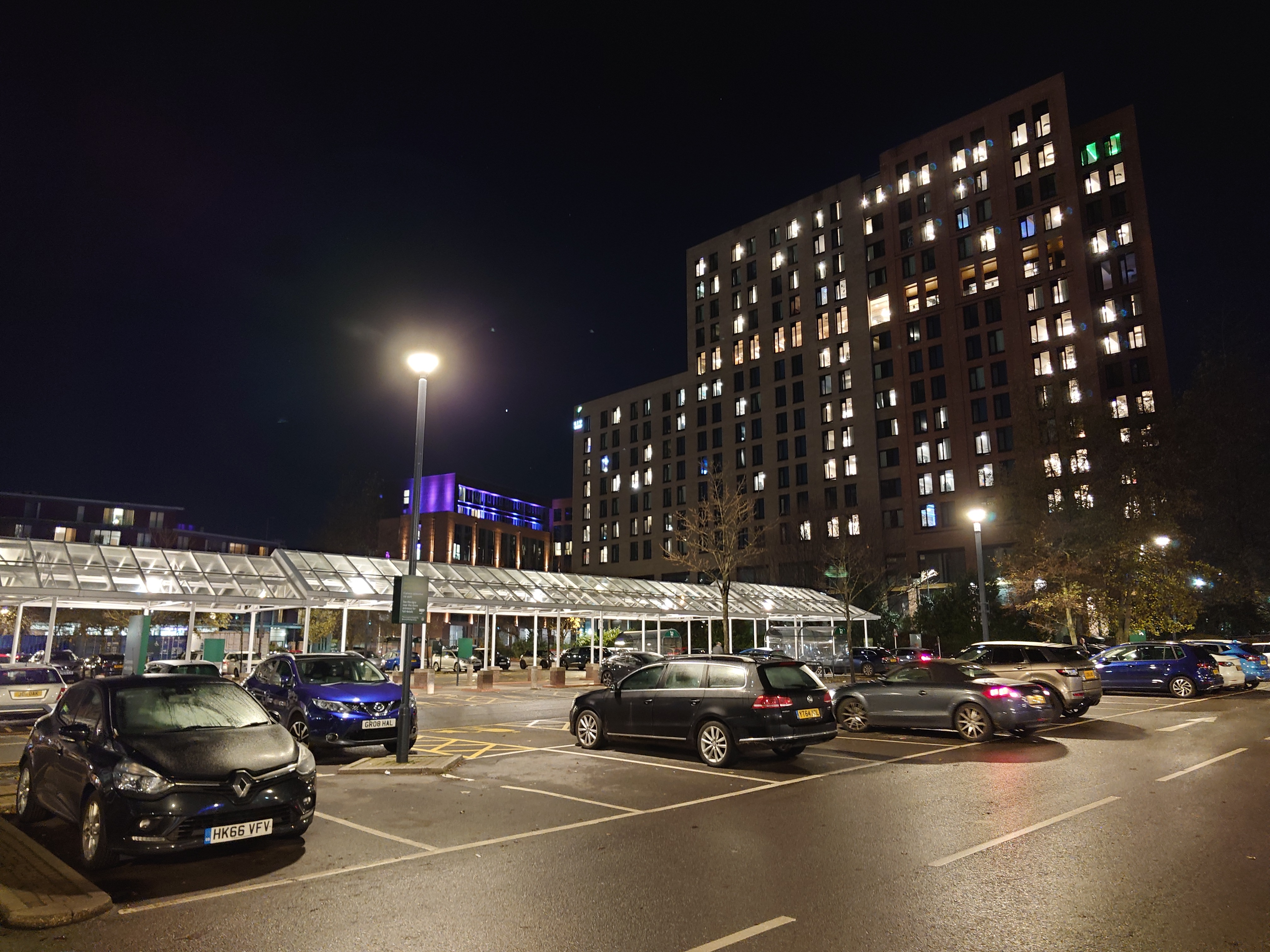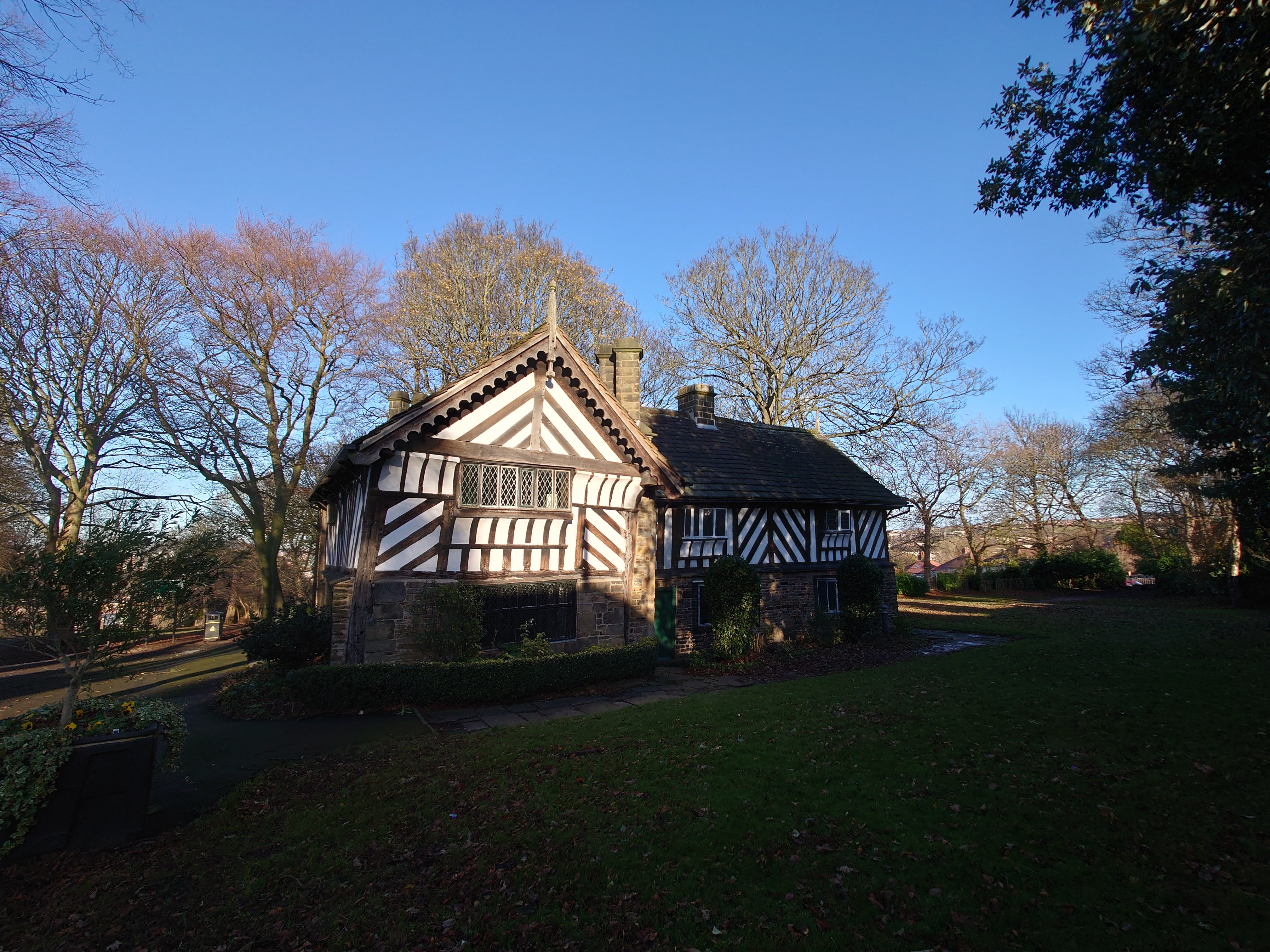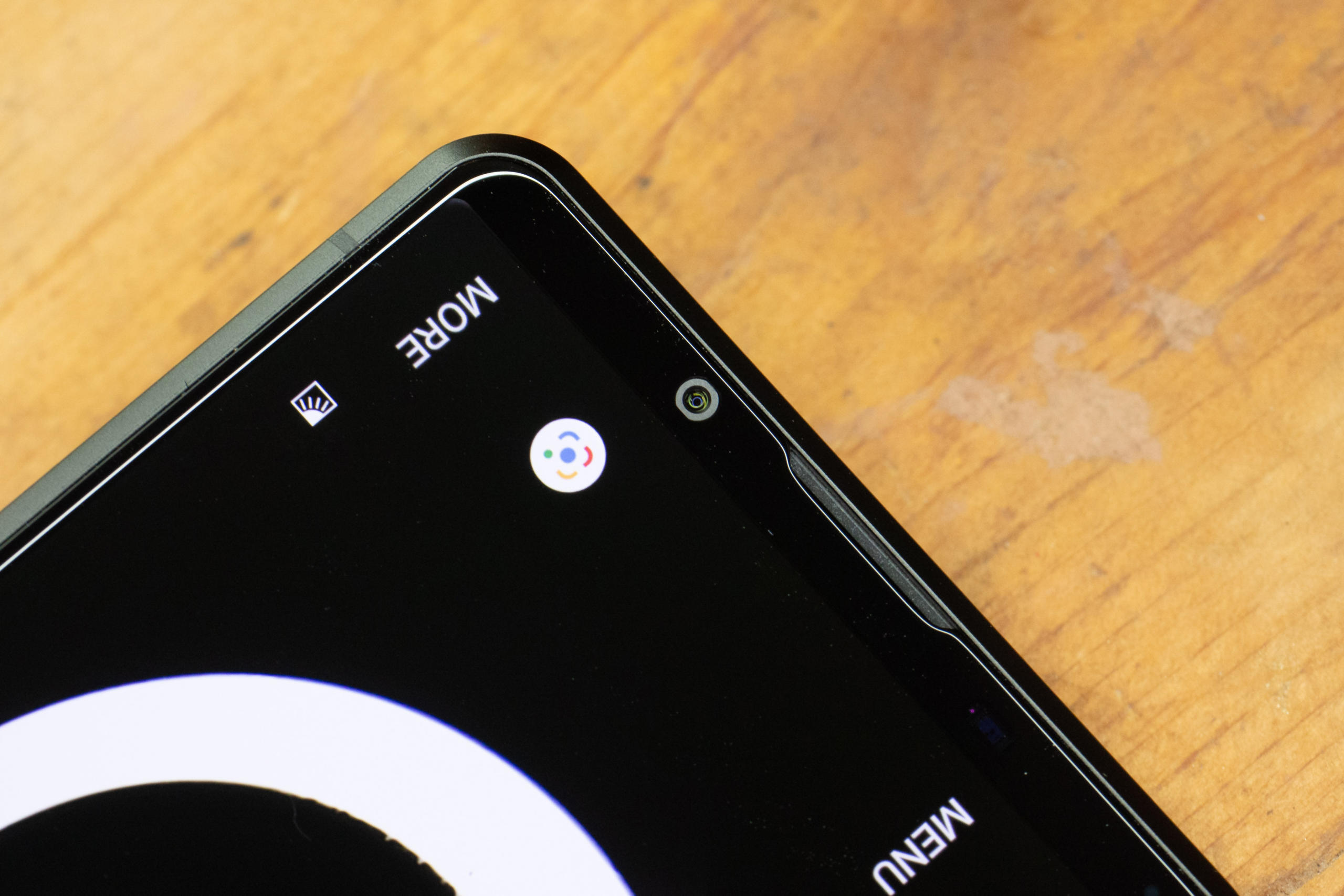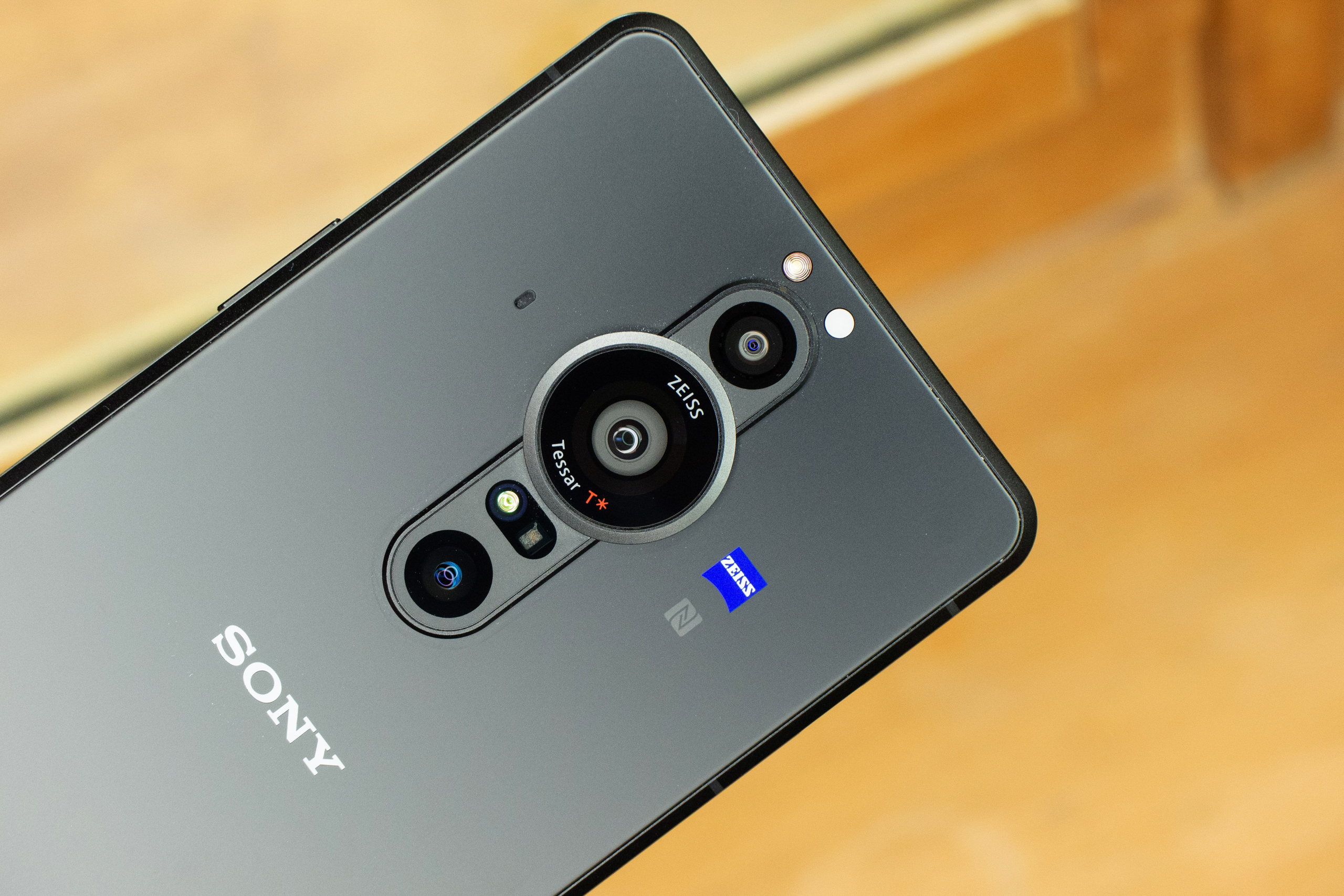The Sony Xperia PRO-I is Sony’s flagship “PRO” smartphone, designed for professionals, and aimed to be “THE CAMERA” according to Sony’s website. It features a triple camera setup on the rear, with an ultra-wide, wide, and telephoto cameras. It’s also capable of recording 4K HDR video at 120fps, with a “1inch” sensor from the Sony RX100 series. But it all comes at a very high price, being £1599. We try and work out if it’s worth the money.
Sony Xperia PRO-I at a glance
- Price £1599
- Android smartphone
- 6.5in 21:9 4K HDR OLED screen, 120Hz, DCI-P3 100%
- Three cameras: 16mm, 24mm, 50mm (equivalent)
- 24mm camera features f/2-4 switchable aperture
- 12GB/512GB RAM/storage
- MicroSDXC support (upto 1TB)
- www.sony.co.uk/electronics/mobile
Sony Xperia PRO-I Hardware and design
The main camera on the rear of the Xperia PRO-I is where all the attention has been focused, if you’ll excuse the pun. With a “1inch” Exmor RS sensor, developed from the RX100 series, however, rather than using the full sensor size, it uses a cropped area of the 20MP sensor, to give 12MP images.
Sony Xperia PRO-I Cameras:
- 16mm f/2.2 12MP, 1/2.55inch sensor
- 24mm f/2.0-4.0 12MP OIS, “1inch” sensor
- 50mm f/2.4 12MP OIS, 1/2.9inch sensor
- 24mm, f/2.0 selfie camera, 8MP 1/4inch sensor
The main camera lens is a Zeiss optic, with T* coating, and has the option of switching between an F2.0 and an F4.0 aperture. Phase detection focus covers 90% of the shooting area, and face and eye detection AF is available for both stills and video, and works with both humans and animals. This main sensor is a stacked BSI CMOS sensor, giving high-speed AF/AE tracking up to 20fps.
Joining the main camera is an ultra-wide, 16mm equivalent camera with autofocus, an f2.2 aperture, and a 12MP sensor, unfortunately nowhere near as big as the main camera, with a 1/2.55 inch sensor.
There a 50mm equivalent, f/2.4 camera, smaller still with a 1/2.9 inch 12MP sensor. Using a smaller sensor for the telephoto camera is common practice, as it allows the optics to be smaller. Unfortunately we don’t get the 70-105mm equivalent zoom telephoto setup from the Xperia 5 III, most likely due to size constraints.
Beyond optical zoom, there is AI super Resolution Zoom designed to give more detail and definition to photos (up to 6.3x), and the camera can also shoot 12-bit raw files.
Low-light performance is improved by the use of burst mode with noise reduction, and the camera will automatically detect the shooting scenario in Basic and Auto modes.
Like other flagship Xperia phones, the camera has been developed with technology from Sony Alpha cameras, which includes shooting modes that look very similar to Sony’s mirrorless cameras.

Sony Xperia PRO-I side-buttons, with dedicated shutter release button, and video shortcut button next to it
Portrait orientation is only available in Basic mode, but not the Auto or advanced shooting mode – and in the Pro shooting modes, the interface only works in landscape orientation.
You can shoot raw files, and there’s a physical shutter release button on the side of the camera, which is much bigger than other Sony smartphones.
The screen is a 6.5inch 21:9 HDR OLED screen which can display up to 1billion colours, with 10-bit tonal gradation (this uses an 8-bit display with 2-bit software smoothing). There’s a refresh rate of up to 120Hz, but on default settings, it uses a lower refresh rate to extend battery life. Similarly, the 4K 3840 x 1644 resolution screen, runs at a default resolution of 2560 x 1096, only switching to 4K under certain circumstances, such as 4K video playback. You’ll also find this screen on the Xperia 1 III.
A separate vlog monitor, the XQZ-IV01, is available, and this gives you a 3.5inch 1280×720 resolution screen that can be attached to the back of the smartphone, letting you monitor video recording when using the main camera. It will set you back a further £169.
The Xperia PRO-I records 4K HDR video at up to 120fps, but if you wanted to save money, then the Xperia 5 III also offers this.
There’s a 3.5mm headphone jack to give improved audio output compared to USB connections. Stereo speakers are built-in, and Hi-Res audio support is included.
Water resistant and dust proof, Corning Gorilla Glass Victus is used on the front and Gorilla Glass 6 is used on the rear.
Battery life management is excellent when you don’t use the phone, but start recording 4K HDR video and you can quickly watch the battery life drop. Leave the Xperia PRO-I alone, untouched and you’ll find your battery life is still at 80%, dropping only 20% over 3 days! (with Stamina mode activated, Wi-Fi on, no sim-card).
The Camera App
The camera app has a Basic mode, an Auto mode and several manual modes. The Basic mode is easy to use, with a nice user interface giving quick access to the different lenses, as well as a bokeh control and aperture control, and you can quickly switch between stills and video recording.
The Auto, and other modes, switch over to a user interface that looks like it’s come from a Sony Alpha mirrorless camera, and this interface doesn’t support portrait shooting, or rather it does, but the user interface doesn’t rotate, so when you do shoot in portrait orientation the display and text is all the wrong way round. You’ll also find that you have to use the shutter release button to take photos, as there is no on-screen shutter release button.
The volume control acts as a digital zoom control, which is unfortunate, I would have preferred this to switch between the different camera lens options.
Video Pro App
The Video Pro app is actually really easy to use, and is better than the Cinema Pro app, letting you record 4K HDR 120fps footage, without having to set everything manually. You can also change some settings while recording video, but not the lens used.
Cinema Pro App
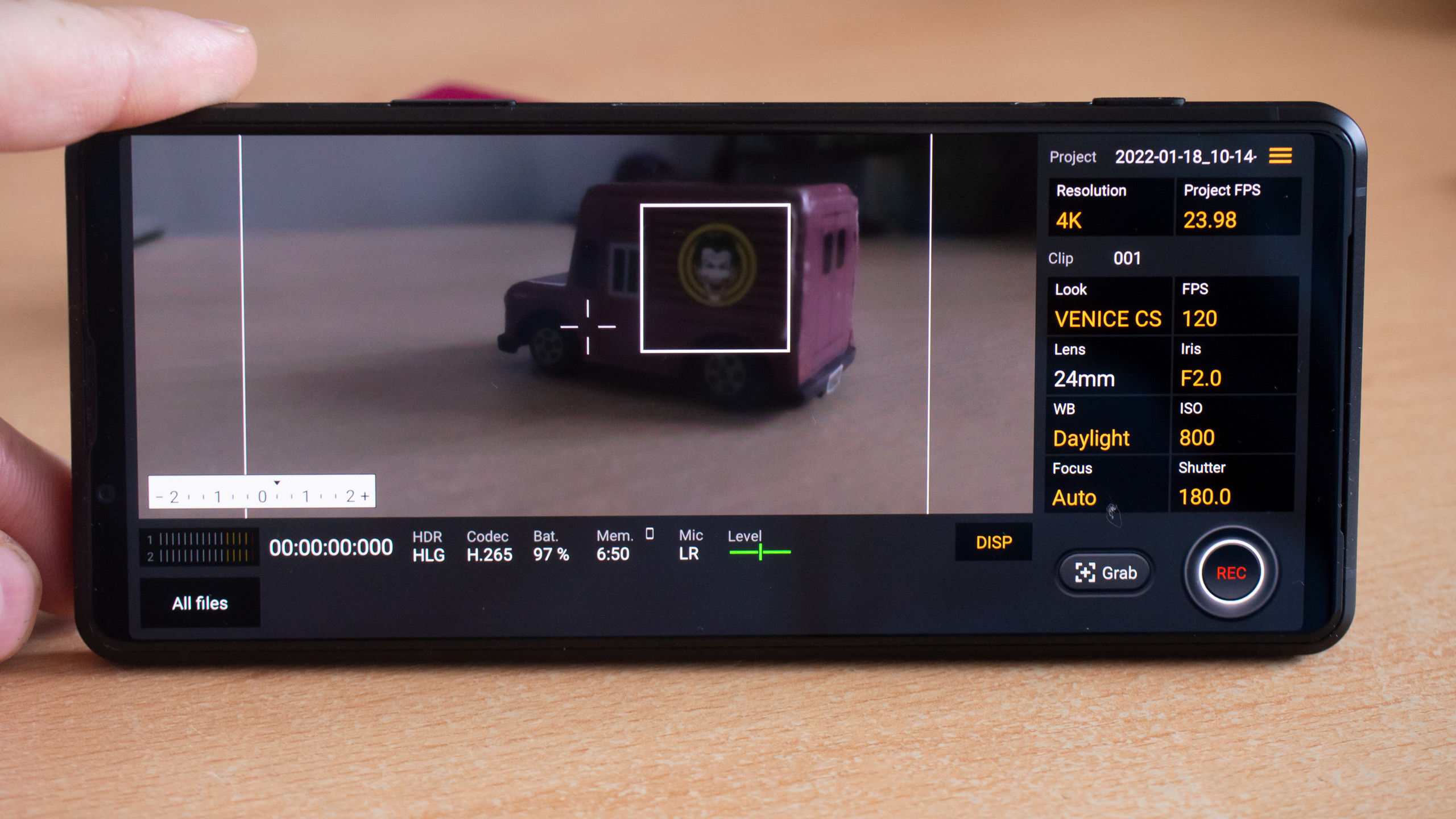
The Cinema Pro app is where you’ll find a number of flat colour profiles, as well as limited Auto options.
A more advanced video app is available called Cinema Pro and lets you record 21:9 video at frame rates up to 120fps. There are numerous controls and settings that the CINE / video pro will find interesting, but for most people it’ll be overkill, and the standard camera app or Video Pro app should suffice for video recording.
Sony Xperia PRO-I Image Quality
Like the Sony Xperia 5 III, the Sony Xperia PRO-I gives images that aren’t as processed as other smartphones, and if you want your photos to look more like normal camera photos, rather than overly-HDR’d works of art, then you might want to look at Sony’s smartphones.
However, with this, you can also find yourself missing some of the impressive night-shot modes and ease of use you get with other smartphones, from the likes of Google and Apple, who are happy to do everything for you. In the Basic and AUTO modes, if the camera decides its dark enough then it will recognise that you are shooting in low-light.
Unfortunately the Sony Xperia PRO-I, with a limited auto night-shot mode, simply can’t come anywhere near to the performance of the Google Pixel 6, and other smartphones with night modes in very low-light conditions, even with a “1inch” sensor. However, where there is enough light, the night-mode/low-light mode can do a reasonable job, as shown below.
Colour reproduction is often more natural looking than other smartphones, and noise isn’t smoothed over as much, meaning you will get photos with noise in the image.
In the PRO mode, using the main camera, you can select from ISO100 up to ISO12800 with multiple steps in-between, and noise is well controlled up to ISO3200, where it starts to become an issue. In the Video Pro app the maximum ISO speed available is ISO6400.
Ultra-wide camera performance
The ultra-wide angle camera gives good colour reproduction, but images are noticeably softer than images from the other cameras on the phone. Auto-focus gives you the ability to focus on close-up subjects.
Wide / Standard camera performance
Images from the main camera, as expected, are the best from the three cameras, but still not what we would call particularly impressive, especially if you’re shooting on days when the lighting is dull or overcast. There’s little benefit to be seen from using this camera, over another flagship smartphone, or even the Google Pixel 6, a £600 smartphone.
Telephoto camera performance
The 50mm equivalent, 2x telephoto camera gives good results, with good detail, as well as good colour. The main disappointment is that it isn’t a longer telephoto lens, for example a 3x or 4x telephoto would be nice. Noise is fairly well controlled, with noise becoming an issue at ISO800 and above.
Selfie camera performance
The camera has the same relatively low-resolution 8MP camera as the XPERIA 5 III, using a small 1/4inch sensor and an F2.0 aperture, with fixed focus. Maximum resolution for video is FullHD. If you were thinking of using the excellent screen as a selfie screen for video, along with this camera, then it’s not recommended. Instead, Sony will sell you a separate screen so you can use the main 12MP camera for video / vlogging.
This is the same selfie camera that you’ll find on Sony’s range of smartphones, from entry-level models, like the Xperia 10 III, to this flagship model.
Video performance
The Xperia PRO-I now gives you three different apps to record video, the basic camera app (in basic mode), the Video Pro app, which is completely new, and the Cinema Pro app.
Image stabilisation on the main camera offers optical SteadyShot(TM) plus “Flawless Eye”(TM) – the ability to focus and track your subject’s eye. You’ll find that the IS option is only available as long as you’re recording at a frame rate of 29fps or less. Once you switch the 59/60fps or above, IS is no longer available, and neither is EyeAF.
Image stabilisation could be better, and at times there’s a jittery quality to footage when there is movement, so care is needed if you want to get steady footage.
For 5-axis stabilisation with “Active SteadyShot” you need to use the 16mm camera. Both the 16mm and 50mm cameras support 4K video recording at up to 29.97fps.
Recording 4K HDR video on the phone drains the battery quite rapidly, 10 minutes drained about 5%, and the phone can get quite warm. 23.98/25/29.97/119.88fps are cropped, 59.94fps is not as cropped.
Using the camera app for video – In the standard camera app you can only record video in the Basic mode, with the choice of FullHD or 4K video recording. You can record using any of the cameras, however, once you’ve started recording video you can no longer switch between the cameras. Once you switch out of the Basic mode to the other modes (Auto, P, etc), then you can’t record video.
The Video Pro app is actually really good, which is surprising, considering how awkward we found Cinema Pro, and making changes is easy. Audio quality is excellent.
The ISO range available is greatly improved over the Xperia 5 III, with up to ISO6400 available on Auto, and ISO3200 manually selectable
A high-temperature warning may appear while recording video, and this happened after roughly 25 minutes, in a room with a temperature of around 20C.
Cinema Pro is not a fun or easy experience. The app will take some time to get used to, and there are various options where you are expected to use manual settings. Have a look at Kai’s video (Youtube) on the Xperia PRO-I to see for yourself the footage and issues with using the smartphone for video.
Value for money compared to the competition
It’s difficult to find many (mainstream) smartphones that are as expensive as the Sony Xperia PRO-I. Priced at £1599, it makes it pretty much the most expensive smartphone available today, excluding folding smartphones. However it does have 12GB RAM and 512GB storage, so we need to compare it to smartphones with the same amount of RAM / storage.
- Apple iPhone 13 Pro Max with 512GB will cost you £1349, or £1549 for a 1TB version.
- Samsung Galaxy S21 Ultra 5G with 512GB will cost you £1329 (with 16GB RAM)
Other flagships available include Google’s flagship Pixel 6 Pro for example, at £849 (128GB) or £949 (256GB), and the OnePlus 9 Pro is available for £829 with 12/256GB RAM/storage.
So you’ve got to see something unique and special in the Xperia PRO-I to justify the high price. Otherwise, you could just buy a Google Pixel 6 (£599) and a Sony Cyber-shot RX100 VI (£849), total price £1448.
Sony Xperia PRO-I Verdict
The headline marketing feature of this smartphone is… “World’s first smartphone with a 1.0-type image sensor (with phase detection AF)”
The Sony PRO-I, however, doesn’t use the full 1inch sensor, instead using a cropped area of the sensor, roughly 1.3x crop or 60% of the sensor, so that you end up with just 12MP from the 20MP sensor being used. Other smartphones, such as the Panasonic Lumix CM1, and CM10 both used a 20MP 1inch sensor, and managed to use the full-sensor size. There’s also the Sharp Aquos R6 (May 2021), co-engineered with Leica, available in other markets, using a 20MP 1inch sensor.
Putting this to one side, let’s look at the pixel size (or pitch) of the sensor, which is 2.4microns. This is larger than some other smartphones, with the iPhone 13 Pro Max featuring 1.9micron pixels, the Samsung S21 Ultra 5G with 0.8micron (2.4micron pixel binned). So there does at least appear to be some benefit from a 1inch sensor, even if the camera is using a cropped portion of it.
Then again, there’s a slight problem with that, as the Sony has an f/2-4 aperture, which is worth highlighting, as this is slower than most other premium smartphones, making the potential benefit from larger pixels offset by the smaller aperture.
So there’s a 1inch sensor, but it uses a smaller area of it. Does the 1inch sensor justify the price, or does the build-quality, or features justify the price?
If the camera performance of the three cameras was noticeably better than other smartphones, then perhaps the price could be justified, but in many ways, the cameras are similar or even worse than competitors that are also significantly cheaper.
The camera offers 4K HDR 120fps video recording, but then again, so does the Xperia 5 III.
The camera offers 4K 120fps video recording with HDR, that’s impressive, but a rather specific requirement, and image stabilisation isn’t up to the same quality as other smartphones.
The telephoto camera is a 50mm equivalent lens, which is not as impressive as the telephoto zoom on offer from other smartphones, including the 70-105mm (equiv) Sony 1/5 III, or the 10x Galaxy S21 Ultra. In fact the Google Pixel 6 offers 2x smart zoom from the standard camera, and the Google Pixel 6 Pro offers a 4x telephoto camera.
Listing the current issues with the smartphone, in the cold light of day, it’s left me wondering how Sony can justify selling this phone for £1599:
- 1inch sensor isn’t actually using the full 1inch sensor, more like 60%
- 4K resolution isn’t selectable for the screen (where is the option hidden?)
- Average to poor stabilisation in video
- No wireless charging
- 8MP selfie camera
- Only a 50mm telephoto camera
Other issues worth mentioning, include the ultra-wide angle camera producing soft images, and the 50mm telephoto camera isn’t really very inspiring, considering others offer 3x, 4x, 5x, or even 10x telephoto cameras. It feels like the ultra-wide and telephoto cameras aren’t particularly flagship cameras, especially considering the price of the device. All three cameras on the latest iPhone 13 feature OIS for example.
The selfie camera is downright disappointing, with Samsung Galaxy cameras offering AF and 4K video from their smartphones for a while now (since the Note10+ / S10 back in 2019). Where is the flagship selfie camera, or wireless charging?
But the biggest disappointment is that Sony’s main flagship camera with a “1inch” sensor isn’t actually using the full size of the sensor, it feels disingenuous for this smartphone to be marketed as having a 1inch sensor, when it’s only using 60% of it. In what other market would it be acceptable to sell something as a certain size, but in actuality deliver something different? Would you buy a 65inch TV, only to find that you can use 60% of it?
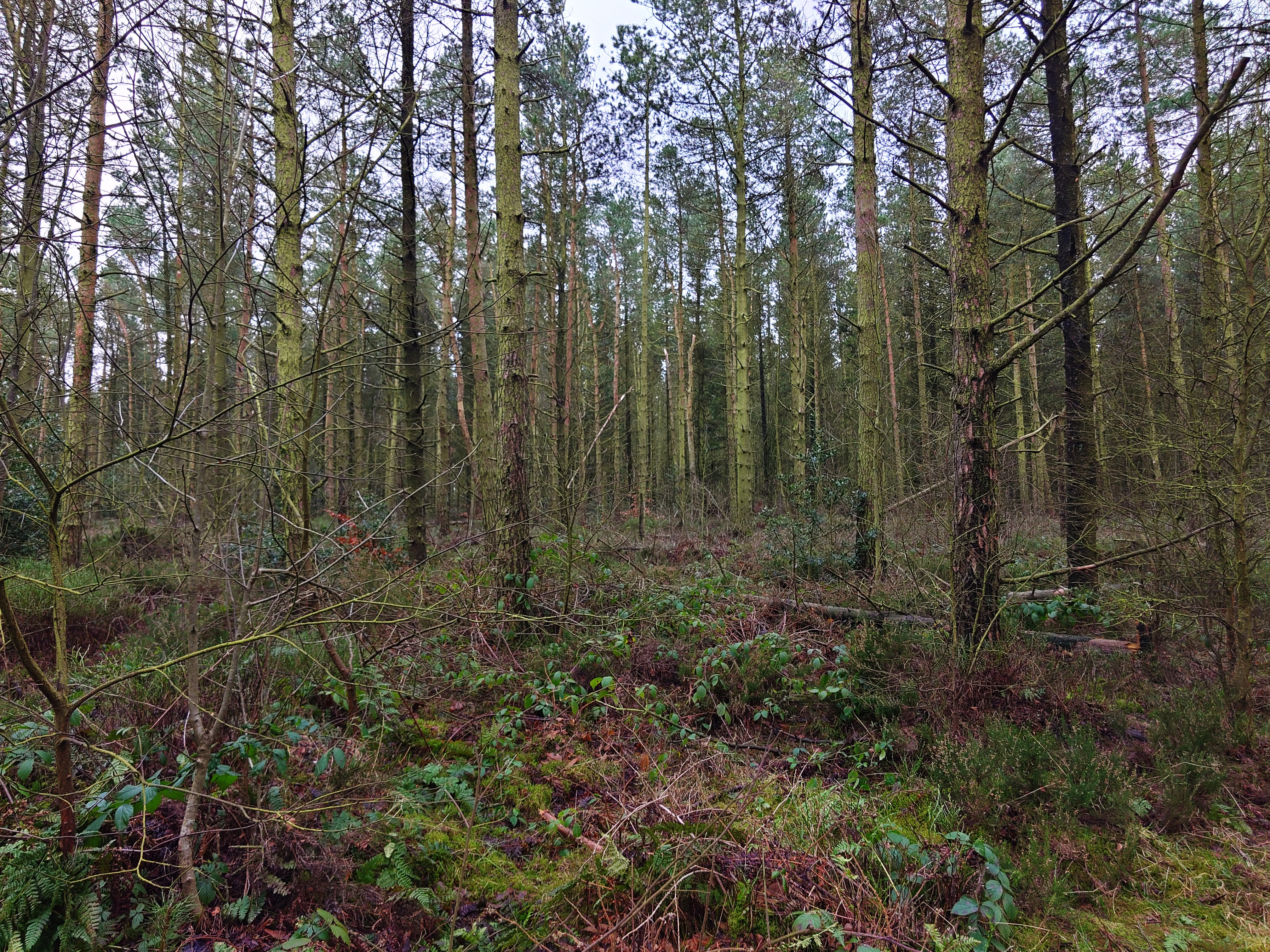
Trees, with the main camera, 1/30s, f/2, ISO320, 24mm equivalent (edited in Photoshop, curves, saturation adjusted)
The cameras give a natural look in comparison to other smartphones – this may appeal to the “traditional” photographer, but do traditional photographers still want a traditional shooting experience from a smartphone? And if so, why not just use a Sony RX100 series camera, which can be bought for much cheaper than the Xperia PRO-I? (RX100 VII, £1049, RX100 VI, £849, RX100 V, £699)
Perhaps we’re missing something here, but can anyone explain why the Xperia PRO-I is worth the money? If you want 4K 120fps HDR video, the Xperia 5 III is almost half the price. If you want a flagship ultra-wide angle camera, and a flagship telephoto camera, you’re better off looking elsewhere.
Perhaps the video features are the reason to buy this smartphone, but as the stabilisation isn’t very good, you could easily find yourself disappointed.
Sorry, Sony, but the Sony Xperia PRO-I needs some serious improvement if it’s going to compete with other smartphones. If it used the full sensor size, or even just a little bit more, so you got a higher resolution than 12MP, it would also go some way to giving professional photographers something beyond what all the other 12MP smartphones offer.
If you want a 1inch sensor camera, buy a Sony RX100 series camera, as it actually uses the full 1inch sensor, giving you 20MP images. If you want a great smartphone, then there are plenty available, all cheaper than the Sony Xperia PRO-I.



